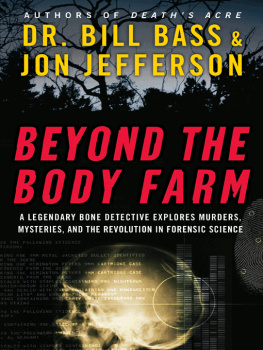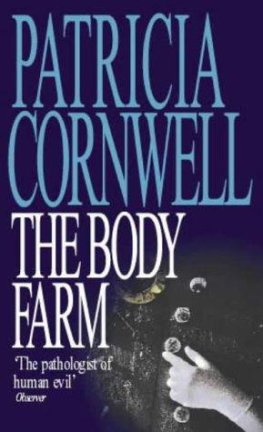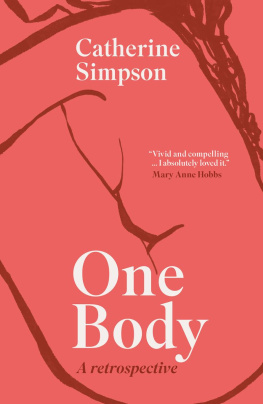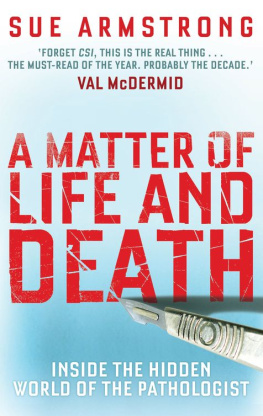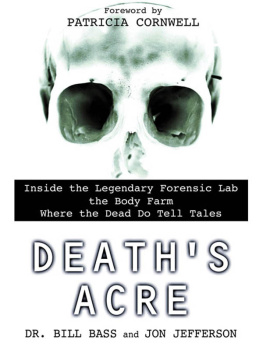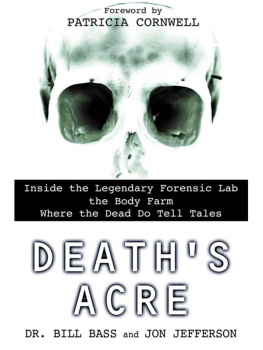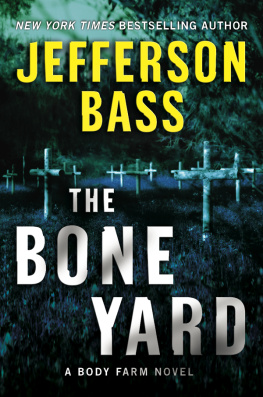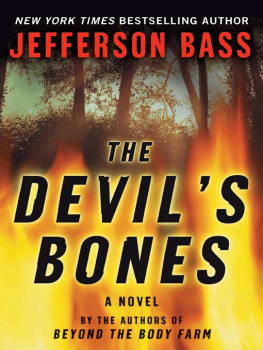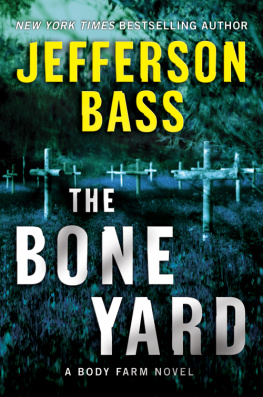I PICKED UP THE hunting knife with my left hand and tested its heft, then shifted it to my right hand to compare. Golfing and batting, Im a lefty, but I grade papers and dial phone numbers with my right. The knife felt more at home there, too. Okay, I thought, add stabbing to the list of right-handed activities.
The nude man lay facedown in the woods, the Tennessee sun filtering through the trees and dappling his back. Kneeling beside him, I slid my left thumb along his spine, feeling for the gap between his fourth and fifth ribs, just behind the lower chambers of the heart. Having found the spot, I set the tip of the hunting knife thereit snagged in the soft fleshthen leaned in and began to push. It took more force than Id expected, and I found myself using both hands, plus some weight. Once the blade was deep into the muscle tissue, I cocked the handle to the left, skewing the blade in the opposite direction, toward the mans spine. It wasnt angling as sharply as I wanted, so I leaned harder. Still no go. I sat back and considered whether there might be some other angle of attack that would land the tip of the blade in his right lung. As I contemplated the weapon jutting from the bare back, a black-and-white SUV, blue lights strobing, roared up and slid to a stop on a concrete slab in front of me. A young deputy leapt out, his eyes wild and his face a battleground of warring impulses.
I held up my left hand, keeping a tight grip on the knife with my right. You reckon you could hang on for just one second? I asked. Im not quite done with this. Grunting with the effort, I gave the handle one final sideways shove and bore down with all my weight. As my victim jerked and skidded from the force, a rib broke with the sound of a green tree branch splintering. The deputy fainted dead away, his fall cushioned by the corpse I knelt beside.
FIVE MINUTES HAD PASSED since the deputys eyelids first fluttered open, and he still hadnt spoken, so I figured maybe it was up to me to break the ice. Im Dr. Brockton, but I expect you know that, I said. He nodded weakly. According to the bar of brass on his chest, his name was Williams. This your first visit to the Body Farm, Deputy Williams? He nodded again.
Body Farm wasnt my facilitys real name, but the nicknamecoined by a local FBI agent and given title billing in a bestselling crime novel by Patricia Cornwellseemed to have stuck. Cornwell set only a brief scene of the novel at my postmortem-decay research lab at the University of Tennessee, but that one scenealong with the facilitys catchy nickname and macabre missionmust have been enough. As soon as the book hit the shelves, the phone started ringing and the media descended in droves. The upshot is, millions of people know about the Body Farm, though few of them know its boring but official name: the Anthropology Research Facility. Unlike some of my colleagues, I dont care which name people use. To paraphrase Shakespeare, a Body Farm by any other name would still stink.
A lot of people wonder what an anthropologist is doing with dozens of rotting human corpses scattered across (and beneath) three acres of Tennessee woods. When they hear the term anthropology, they think of Margaret Mead and her sexually liberated Samoans, or Jane Goodall and her colony of chimps, not physical anthropologists and their calipers and bones. But the rise of forensic anthropologyusing the tools of physical anthropology to help solve crimesseems to be elevating the profile of the bone detectives. Its amazing what you can learn about murder victims by studying their skulls, their rib cages, their pelvises, and other bones. Who was this person who was cut into pieces and hidden in a junkyard? Whats the age, race, sex, and stature? Do his dental fillings or healed fractures match X-rays of missing persons? Is that hole in the skull from a gunshot wound or a golf club? Was he dismembered with a chain saw or a surgeons scalpel? Finallyand heres where my facility has made its greatest mark over the past quarter-centuryjudging by the degree of decomposition, how long has this poor bastard been dead?
Of course, when word gets around that youve got dozens of dead bodies in various states of disrepair, all sorts of interesting research questions come your way. Thats why I now found myself kneeling over a corpse, plunging a hunting knife into his back.
I looked down at my victim, the weapon still jutting from the oozing wound. Im running a little experiment here, I said to the shell-shocked deputy who had caught me in flagrante delicto . Despite the knife in his back, this fellow actually died of a coronaryhalfway through a marathon. Williams blinked in surprise, but I just shrugged in a go-figure sort of way. Forty years old, ran every day. I guess you could say his legs just outran his heart. I waited for a laugh, but there wasnt one. Anyhow, his wife took some of my anthropology classes here at UT about twenty years ago, so when he keeled over, she donated his body for research. Im not sure if that says good things or bad things about the marriage.
Williamss eyes cleared and focused a bithe seemed to be at least considering whether to smile at this oneso I kept talking. The words, I figured, gave him something to latch on to as he hauled himself out of his tailspin. Im testifying in a homicide case thats about to go to trial, and Im trying to reproduce a stab woundwhat the medical examiners autopsy called the fatal woundbut Im not having much luck. Looks like Id have to violate a couple of laws of physics or metallurgy to get that blade to follow the path the ME described. His eyes swiveled from my face to the corpse and back to me again. See, the MEs report had the blade entering the victims back on the left side, then angling up across the spine, and finally veering sharply into the right lobe of the lung. Cant be done. Not by me, at least. Between you and me and the gatepost, I think the ME botched the autopsy.
I had propped the deputy against the trunk of an oak tree. By now he looked like maybe he was ready to get up, so I peeled off a glove and hauled him to his feet. Take a look around, if you want, I said, nodding toward a cluster of clothed bodies at the edge of the main clearing. You might see something thatll help you with a case someday. He considered this, then took a tentative glance around the clearing. Over there, weve got a decomposition experiment thats comparing cotton clothing with synthetic fabrics. We need to know if certain types of fabric slow down or speed up the decomp rate. So far, looks like cottons the winner.
What difference would it make? Ah: he could talk!
Cotton holds moisture longer, which the flies and maggots seem to like. Keeps the skin nice and soft. He winced, clearly regretting the question. Up the hill in the woods, I went on, weve got a screened-in hut where were keeping the bugs away from a body. Youd be amazed how much the decomp rate slows when bugs cant get to the corpse. I turned to him. One of my students just finished a study of cadaver weight loss; guess how many pounds a day a body can lose? He stared at me as if I were from another planet. Forty pounds in one day, if the bodys really fat. Maggots are like teenage boys: you just cant fill em up.
He grimaced and shook his head, but he grinned, too. Finally. So youve got bodies laid out all over the ground here?


